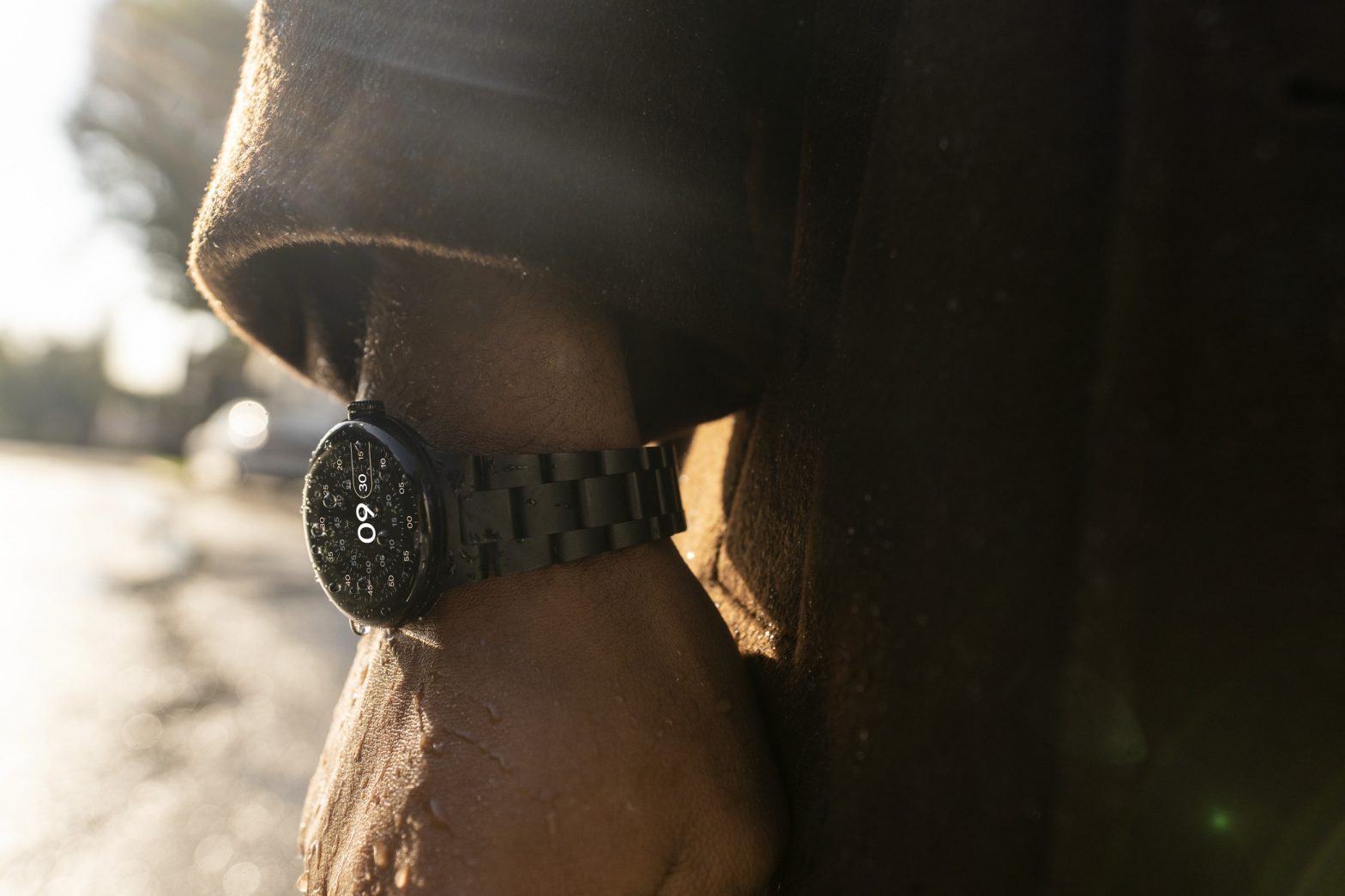/
On top of blood oxygen tracking and abnormal heart rate alerts, the Pixel Watch is getting new metal link bands and auto-pause for workouts. And hey, Google’s throwing in a few Fitbit updates, too.
Share this story
:format(webp)/cdn.vox-cdn.com/uploads/chorus_asset/file/24722318/Metal_Bands_Lifestyle_3__1_.png)
Google just announced it’s rolling out a slew of Pixel Watch and Fitbit software updates. So many that it’s a bit confusing and all over the place, though the major highlights are nighttime blood oxygen levels (SpO2) and abnormal high and low heart rate alerts for the Pixel Watch.
The blood oxygen tracking feature won’t be spot checks as on the Apple Watch or Samsung Galaxy Watch. Instead, the Pixel Watch will passively monitor your SpO2 as you sleep — the same as Fitbit does with its smartwatches. This is actually a good thing, as it lets you view longer-term trends as opposed to a single, random reading.Meanwhile, high and low heart rate notifications are a staple on modern wearables. Unlike EKGs for atrial fibrillation detection — which the Pixel Watch already had — these trigger alerts when the watch detects your heart rate suddenly dropping or spiking above normal levels when at rest.
By itself, this is a good example of how confused Google’s wearable lineup is. A part of me forgot the watch didn’t already have these features. When the Pixel Watch launched, Google seemingly omitted random health features you’d expect to see on a smartwatch. It was baffling since many were features that Fitbit, which powers the Pixel Watch’s health features, had included on its own devices. Blood oxygen and abnormal heart rate alerts were chief among them. At the time, I theorized it was a bid to better differentiate the Pixel Watch from Fitbit’s Sense 2 and Versa 4, especially since the Fitbits had their smart features nerfed. Google was essentially trying to justify why three smartwatches were needed but ended up confusing everyone as to which watches had what features people actually need.
:format(webp)/cdn.vox-cdn.com/uploads/chorus_asset/file/24722322/Oxygen_Saturation_Tracking.png)
Aside from blood oxygen and abnormal heart rate alerts, Google is also adding auto-pause for running, walking, and cycling workouts. It’s exactly as it sounds. If you’re held up at a corner waiting for a green light during a run, the Pixel Watch should be able to automatically pause and restart without you having to do anything.
This isn’t the first time Google’s addressed this odd gap in health features since the Pixel Watch launched. Back in November, for example, it rolled out an update adding Fitbit’s Sleep Profile feature to the Pixel Watch.
If that was it, this would be a fairly simple update. However, there are even more seemingly random Pixel and Fitbit updates thrown into the mix. Google is expanding Assistant on the Pixel Watch to more countries and adding three new Spotify tiles. On the accessory front, it’s releasing new brushed silver and matte black metal link bands on June 16th for an eye-watering $199.99.
Google also seems like it’s trying to clean up the feature mess for Fitbit owners. If you’ve got a Charge 5, Luxe, Inspire 3, Versa 4, and Sense 2, you can also expect some new UI changes this week. All the aforementioned devices will get improved support for global characters and right-to-left text. You’ll also be able to view your Daily Readiness Score from the wrist on all Fitbit devices. Versa 4 and Sense 2 users will also get Menstrual Health tiles.
But perhaps most exciting, Versa 4 and Sense 2 users will be able to switch up clock faces without having to go into the Fitbit app. This is par for the course on nearly every other wearable, so it’s about time. Up until now, you had to browse through the App Gallery in the Fitbit app, wait approximately an eternity for the face to download, and then another lifetime for it to load on the watch.
The Charge 5, Luxe, and Inspire 3 won’t get to do this — why, I have no clue — but as a consolation prize, they’ll get four more clock faces from the Fitbit app gallery. These three devices will also give users the ability to pick from a full list of exercise modes from the wrist.
:format(webp)/cdn.vox-cdn.com/uploads/chorus_asset/file/24100934/226336_Pixel_Watch_AKrales_0260.jpg)
It’s possible that some of these changes are in preparation for WearOS 4, which was announced last month at Google I/O. WearOS 4 is supposed to extend the Pixel Watch’s dismal battery life — and that’s crucial for overnight, continuous monitoring features like SpO2 tracking. Likewise, the rumored Pixel Watch 2 will purportedly get the Sense 2’s continuous electrodermal activity sensor, which enables its real-time stress-tracking features. Of course, this is all speculation until there’s an official announcement. That said, it’s not impossible to think that longer battery life may enable more advanced health features on the Pixel Watch this fall.
Essentially, Google is paving over the potholes in its wearable road map for an overall smoother user experience. Over time, that ought to create more cohesiveness between the two brands, and hopefully, it’ll become easier to intuit the difference between a Fitbit smartwatch and a Pixel Watch. Or, it could be that Google’s simply planning to subsume Fitbit more completely, the way it has with Nest. Either way, it should mean a less confusing product lineup. In the meantime, it’s totally fine to be a bit confused as these updates roll out over the next week.
